the bread of tears
September 15: Our Lady of Sorrows
Give us, O holy Virgin, the bread of tears: and sorrow for our sins in the land of our sojourning.
St. Bonaventure, excerpt from the Psalter of the Blessed Virgin Mary (13th c.)
Welcome! Whether you’re a longtime friend or a new kindred spirit here (I recommend visiting the Village Green to get your bearings), I’m delighted to be a companion to you through the liturgical year.
Please enjoy this month’s focus: a practice of attention that encourages us to deeply explore one holiday within the context of the season.
For more to supplement the rest of your September days - including a special gathering with an author! - flip through the September Almanac.
Pax+bonum, Kristin.
» Printable Resources
Keeping a liturgical Book of Hours binder helps me to distill all of the inspiration I find, so I can easily look to the elements that have been most nurturing for our family & community.
In commemorating Our Lady of Sorrows, there are SO many beautiful hymns, floral emblems, and verses…here’s a little collection going into extra detail on some of these, as well as traditional meal ideas and more.
Cover page featuring Our Lady’s Bird (aka a ladybug!), with her seven spots on each wing-shell for seven sorrows… and Our Lady’s Tears, more commonly known as Delphinium.
Five pages of prompts, information, & poetry (with photos) to help you learn about this feast and reflect on how it intersects with your own life and landscape.
Paid members can find this (as well as my whole archive of printables) in the Scriptorium:
» Original Art
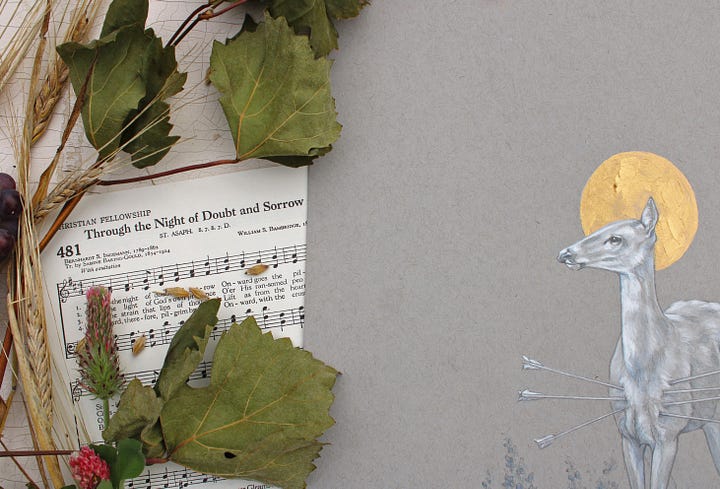

This original painting - pencil, gouache, watercolor, and gold acrylic (made iridescent with mica flakes) - was truly something special to work on. The image of a doe shot with seven arrows came to me, and I wanted to bring her to life with a few different media and subdued colors.
Imagine my delight when I finished my doe and then found this stunning portrait of the Sorrowful Mother:
A kindred spirit of the Dolorosa doe!
You can find my original painting listed for sale on Etsy:
TO HER WHOSE HEART ALSO BLED
…the Sorrows of the Blessed Mother of God always appealed to the affectionate sympathy of Christian peoples; for sorrow is the common inheritance of mankind. Few, indeed, are the individuals who pass their lives entirely free from either mental or corporal sufferings. For sympathy and consolation they naturally turn to her whose heart also bled: to the Sorrowing Mother of the Suffering Savior. Thus it came about that in the course of the centuries Mary was ever appealed to as the Comforter of the afflicted under various titles.
Excerpt from Mission Nuestra Senora de la Soledad by Fr. Zephyrin Engelhardt, OFM (1929)
Today, the Church again offers us her gift of paradox. As we step into the story of Our Lady of Sorrows, we’re invited into both a memorial and a feast…a time to celebrate and to grieve the sorrows of the Blessed Virgin Mary, weaving into them our complex sorrows and joys. Like St. John, we get to stand at the foot of the cross and welcome Mary’s sorrows into our own homes, our own complicated joys and sufferings.1
Though the sorrows of Mary have been part of Christian piety since the days of the early Church, they bloom into a more widespread pattern of devotion in the 13th century. Around 1240, the seven founders of the Servites (Order of Servants of Mary) experienced a vision of Our Lady, appealing to them to focus their prayer toward her sorrows in particular.
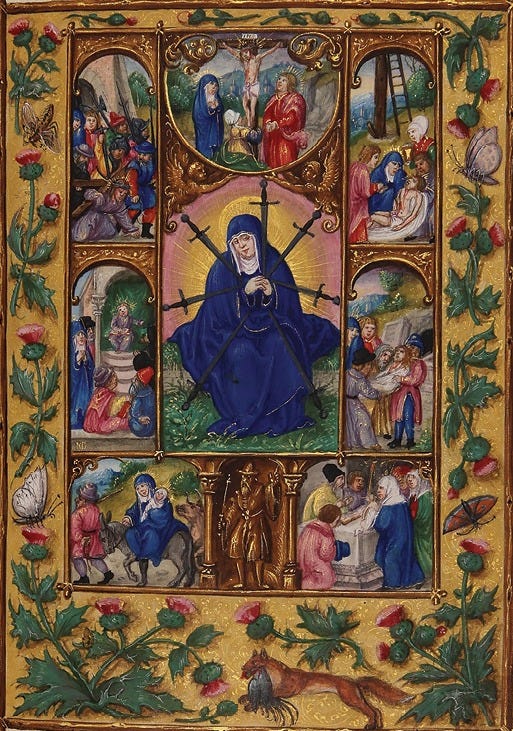
“‘Behold, this child is destined for the fall and rise of many in Israel, and to be a sign that will be contradicted (and you yourself a sword will pierce) so that the thoughts of many hearts may be revealed.’”
Luke 2:34-35
Approaching & describing the suffering of Mary is daunting, but her sorrowful story is told in seven pivotal moments…swords that pierce her heart, as Simeon2 had prophesied:
The Prophecy of Simeon (Luke 2:25-35)
The Flight into Egypt (Matthew 2:13-15)
The Loss of Jesus for Three Days (Luke 2:41-50)
The Carrying of the Cross (Luke 23:27-31; John 19:17)
The Crucifixion of Jesus (John 19:25-30)
Jesus Taken Down from the Cross (Luke 23:50-54; John 19:31-37)
Jesus Laid in the Tomb (Luke 23:50-56; John 19:38-42; Mark 15:40-47)
This sorrowful framework brings Mary one of her other titles: Queen of Martyrs…a virtue not received from bloodshed or a violent death, but rather from her immense compassion and spiritual suffering for her Son.
Over the centuries, as dedication to Our Lady of Sorrows continued to deepen and expand, the Church responded - gradually adapting the liturgical year to reflect the sorrowful devotion. A feast granted to the Servites was then woven into the general calendar, its date shifting back and forth over the centuries, eventually finding its current placement of September 15.3
This date is layered with potent timing: the memorial of Our Lady of Sorrows, when we recall all Mary suffered for her Son, falls one week after we celebrated her birthday…a novena bridging the gap between these two poles of Our Lady’s life story.
And even more poignantly, the day before Our Lady of Sorrows is Roodmas: the Feast of the Exaltation of the Holy Cross on September 14…a feast in which we celebrate St. Helena’s finding of the true Cross, recalling that it held the unfathomable suffering and ultimate triumph of Jesus.
The calendar leads us to the Cross before we enter the threshold of Our Lady of Sorrows.
Mary’s sufferings are bound to the crucifixion of her Son, and as we move through our September days, we get to liturgically experience that union of sorrow - and we’re invited to unite our own sorrows with the cross and with Our Lady, so steadfast at the foot of the cross.
This is where hope dwells: not in denying suffering, running from it, fearing it, resenting it…but in entering into it with Jesus and his Mother.
And then, we can see glimmers of that peace that surpasses understanding. We mourn and celebrate all at once, becoming whole rather than living fractured, partial versions of ourselves. In practicing holy joy amidst suffering, we don’t deny our pain…we baptize it.
And trust me, I get it…at face value, the feast of Our Lady of Sorrows doesn’t sound like much of a light-hearted party. But, pointing us toward the life & sufferings of Jesus, it paradoxically rings with joy…because it gives us a glimpse of the wholeness to which we’re called. We’re invited to live entirely: not compartmentalizing our wounds, not denying our joys, but reuniting all the injured and all the beautiful pieces of our own story within a greater Story.
BREAD OF TEARS & BLESSED FRUIT
Give us, O holy Virgin, the bread of tears: and sorrow for our sins in the land of our sojourning.
Make the Blessed Fruit of thy womb propitious to us: that we may be filled with the grace of the Holy Spirit.
St. Bonaventure, excerpt from the Psalter of the Blessed Virgin Mary (13th c.)
The approaching Autumn Equinox, the bustling height of the harvest season, the otherworldly beauty of autumnal decay…these lovely mid-September days of transition provide the setting for Our Lady of Sorrows (and her Roodmas predecessor).
The Seven Sorrows are, after all, a story of harvest: the fruit of Mary’s womb would become the bread broken for us, the blood poured out for us. In this divine economy, sorrows are paradoxically fruits, suffering is transformed into triumph, limitation into freedom.
“Amen, amen, I say to you, unless a grain of wheat falls to the ground and dies, it remains just a grain of wheat; but if it dies, it produces much fruit.”
John 12:24
It’s a strange truth revealed so tangibly in the countless regional harvest festivals enjoyed around the feast of Our Lady of Sorrows.
In mid-September, the harvest wagon is full, but much of the produce has begun to wane. All the grainfields have either been harvested or are ready to be harvested & threshed, and it’s this Eucharistic emblem that provides a beautiful touchpoint for traditional harvest celebrations.
In Slovakia (which enjoys Our Lady of Sorrows as its patroness), the September harvest is still celebrated with feasting and merriment. Called Dožínky (“Harvest”), it’s a festival with ancient roots braided beautifully into Church practice.
After the final summer harvest of grain, remaining grain would be collected from the stubble fields, woven to form intricate Dožínky wreaths adorned with fall flowers and September fruits. Then, the wreath would be hidden: placed somewhere on the farm, a harvest token to be looked for at Christmastime.
Isn’t that such a lovely gesture? As the dark winter days grow colder toward Christmas Day, finding that defiantly hopeful harvest wreath of grain would be a salve for tired souls. A glimmer of joy in the growing darkness…a lovely truth hidden in plain sight, placed as a reminder of the hope hidden in sorrow.
The tradition has grown more elaborate, with displays of stunning Dožínky forms…sprays of wheat forming crosses, with bright autumn flowers throughout, images of Jesus or Mary framed by golden wheat berries.
I wandered out to our field of barley & crimson clover to ponder these bittersweet harvests as the feast of Our Lady of Sorrows approached. The barley heads, all rippling in the fall breeze, all reminders of that body broken for us. And the trellised table grapes - his blood, poured out for us - all ripe & bursting this time of year, are next to the barley.
I’ve walked past that placement of barley & grapes countless times this season, but it wasn’t until I brought the Seven Sorrows with me that I saw them together.
And, dotted throughout the barley, vibrant blossoms of crimson clover. I like to think of them, now, as Mary’s sorrows: planted lovingly, hopefully, within the broken body and spilled blood of her Son.
READ ON
BENEDICTION
Gentle Mother, we beseech thee,
By thy tears and troubles sore;
By the death of thy dear Offspring,
By the bloody Wounds He bore;
Touch our hearts with that true sorrow
Which affected thee of yore.Charles Gounod, excerpt from “What a Sea of Tears and Sorrows” (19th c.)
Having suffered such difficult grief and loss over the years, the opportunity to re-encounter this beautiful, sorrowful feast annually has been a hopeful practice for me: a trellis to train myself away from that old habitual illusion (delusion?) that suffering has the final word.
It doesn’t. Suffering is broken through, pierced by hope and love, transformed on the cross into something beautiful.
My dear ones, whatever you’re carrying today…I hope & pray that Our Lady of Sorrows can be a hopeful companion on your journey toward wholeness, where your entire complicated self - with all the pain and all the joy - is welcomed and freed at the foot of the cross.
Pax et bonum,
Kristin
“When Jesus saw his mother and the disciple there whom he loved, he said to his mother, ‘Woman, behold, your son.’ Then he said to the disciple, ‘Behold, your mother.’ And from that hour the disciple took her into his home.” John 19:26-27 (NABRE)
We’ll also mark Simeon’s prophecy again at Candlemas, in February, when we celebrate Mary’s “churching” - the ritual purification of the BVM after the birth of Jesus.
In the 17th century, the Servites were granted a feast for their devotion, placed on the third Sunday of September; the 18th century saw the addition of this feast to the general calendar, but moved it to Passiontide. In the 19th century, it was returned to September - and, most recently, it was fixed to September 15 in 1914.



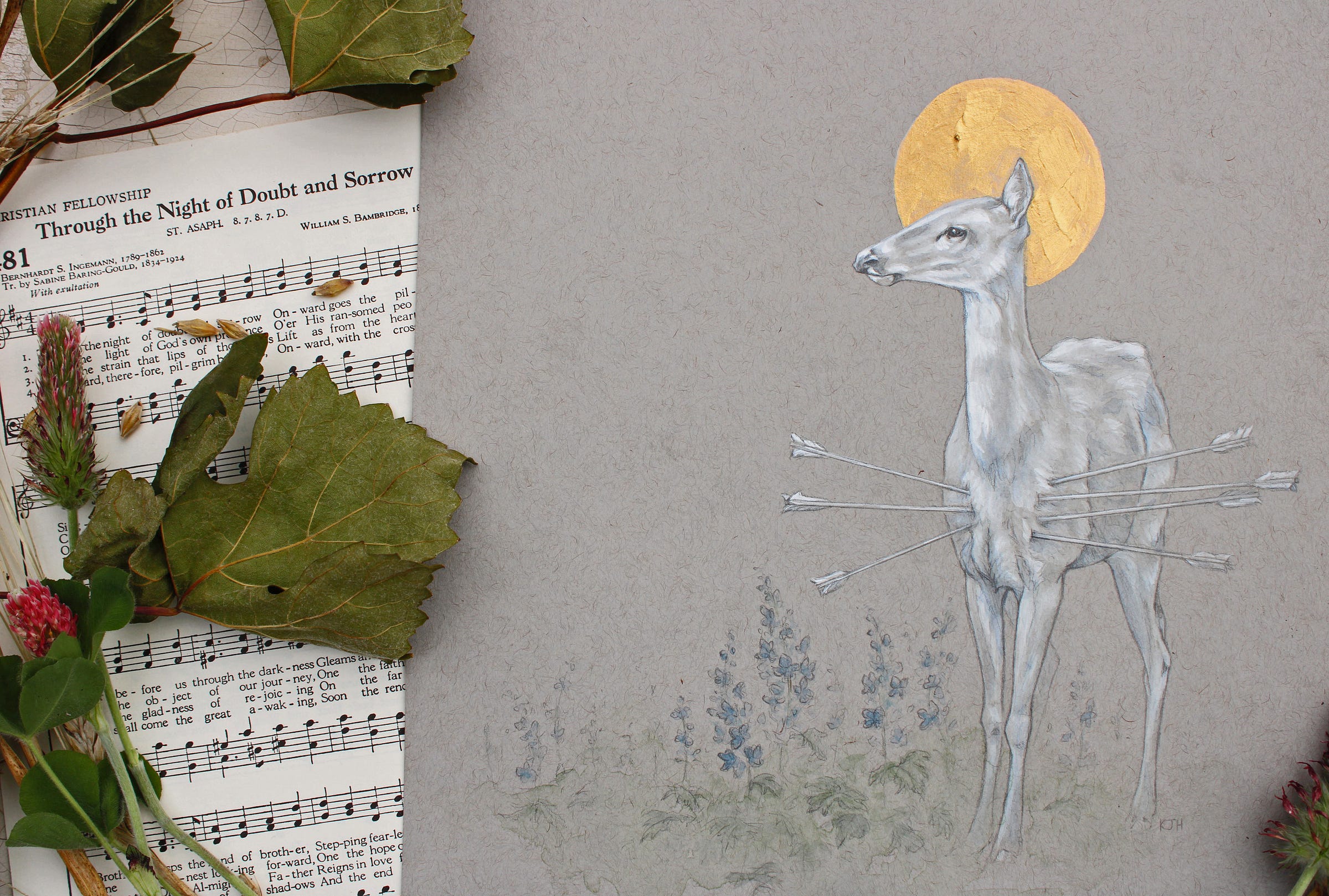

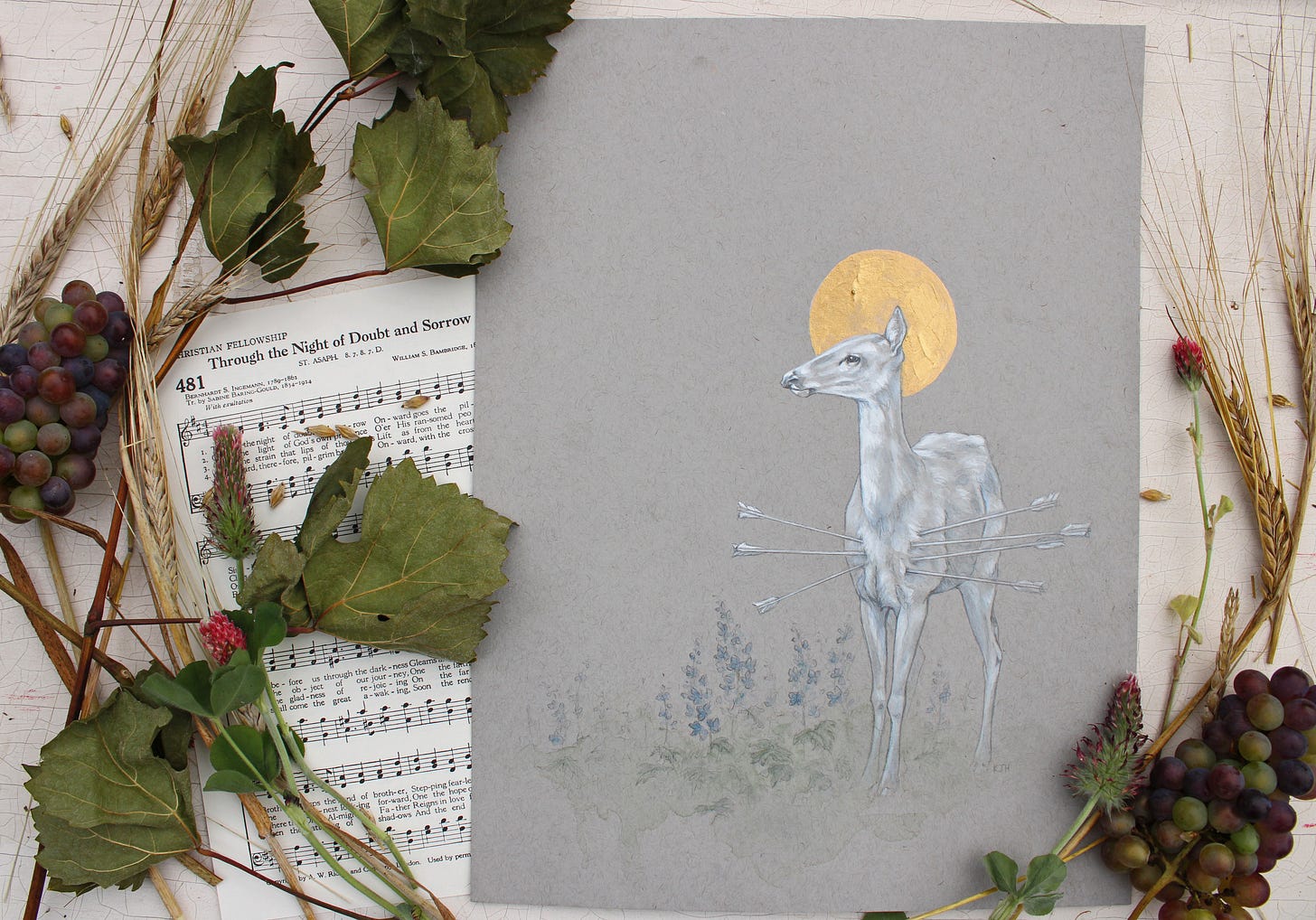
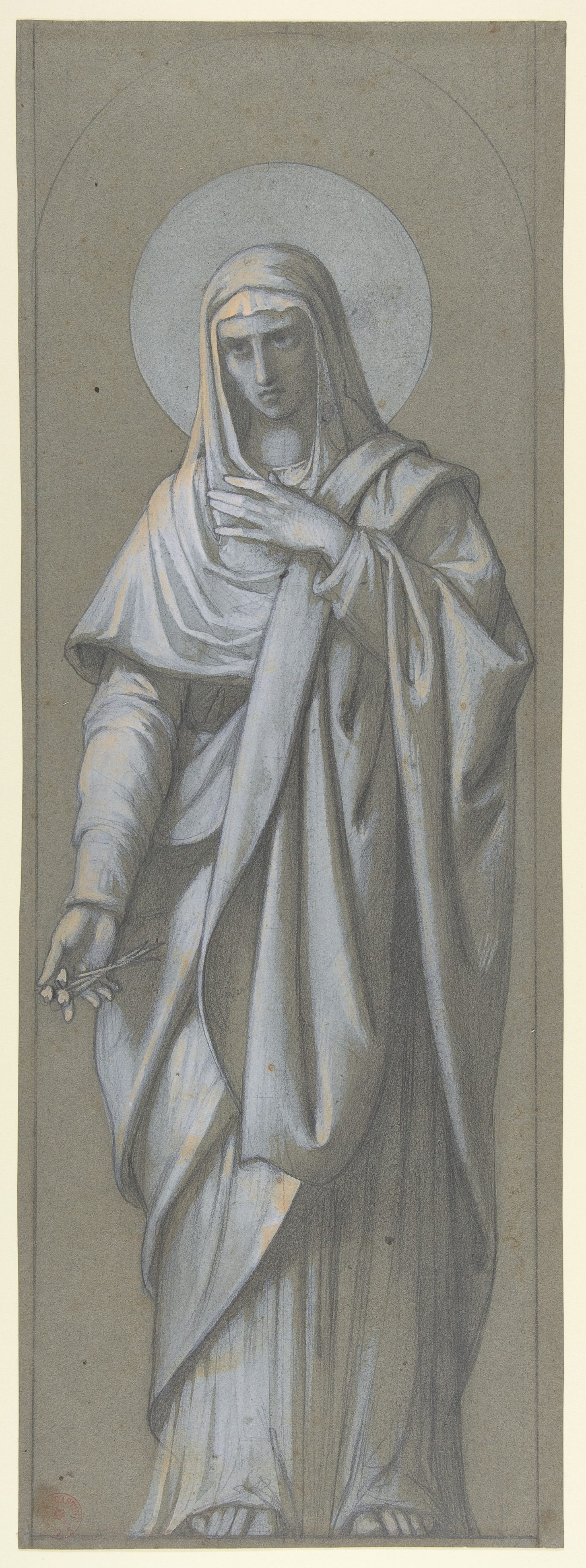

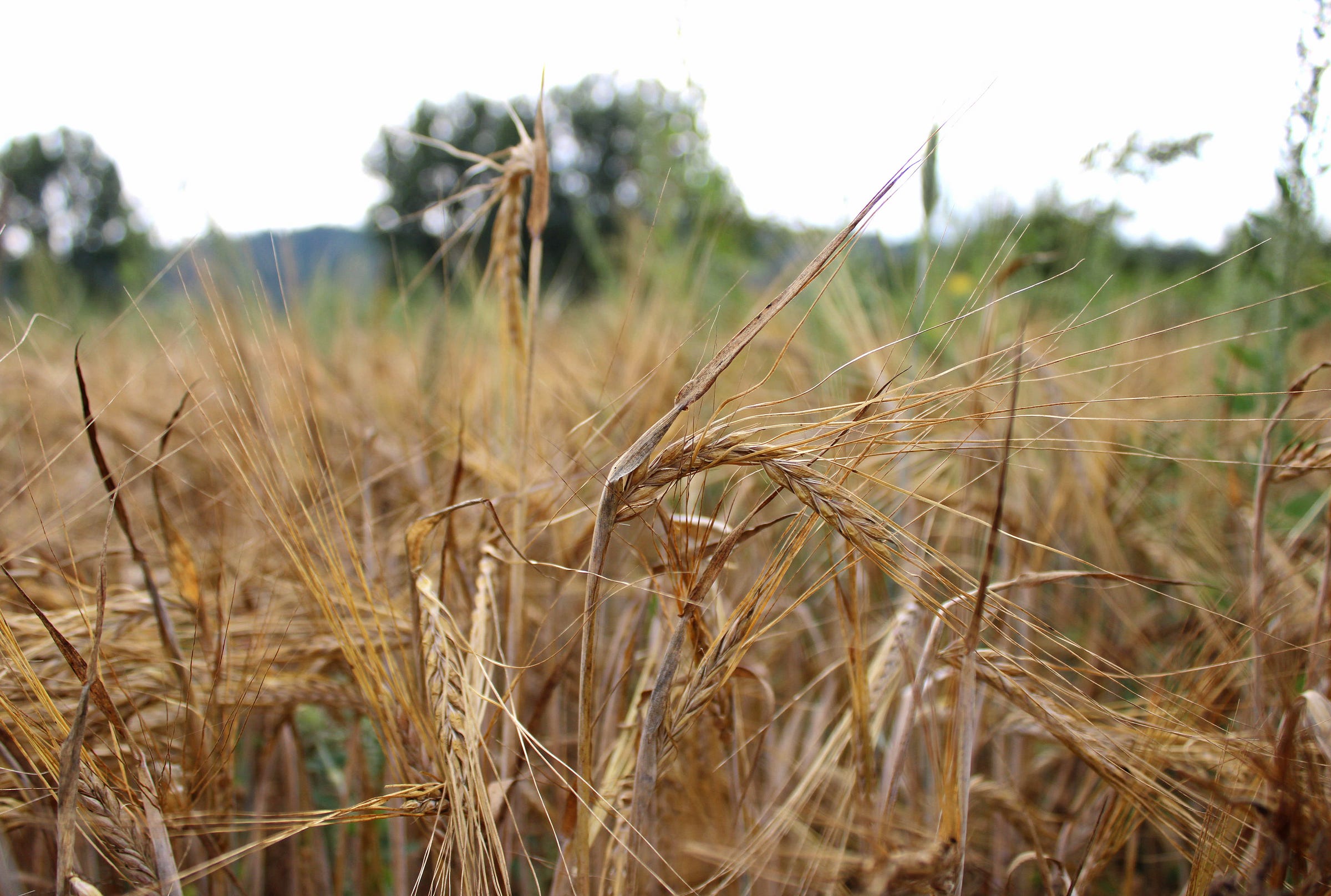

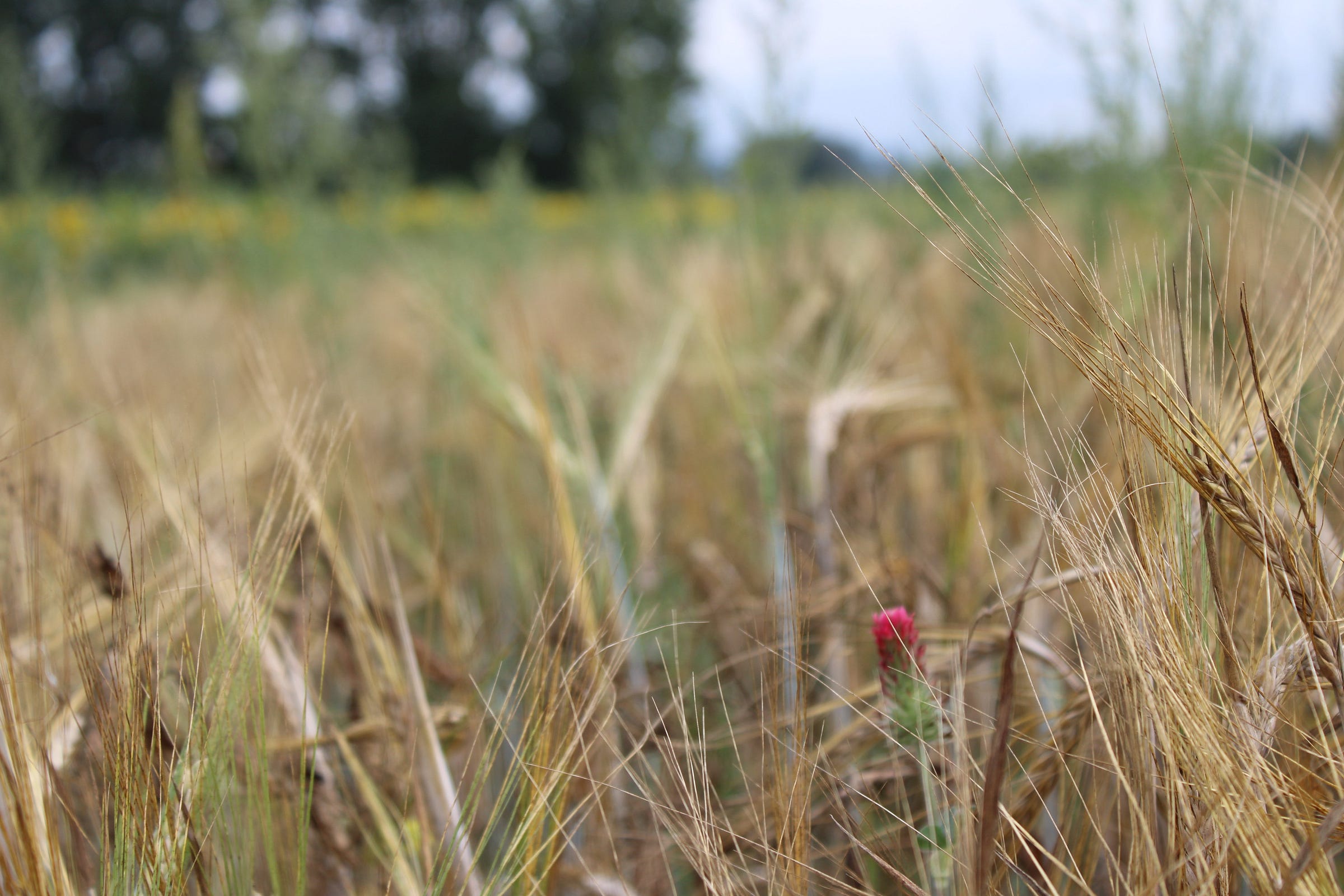
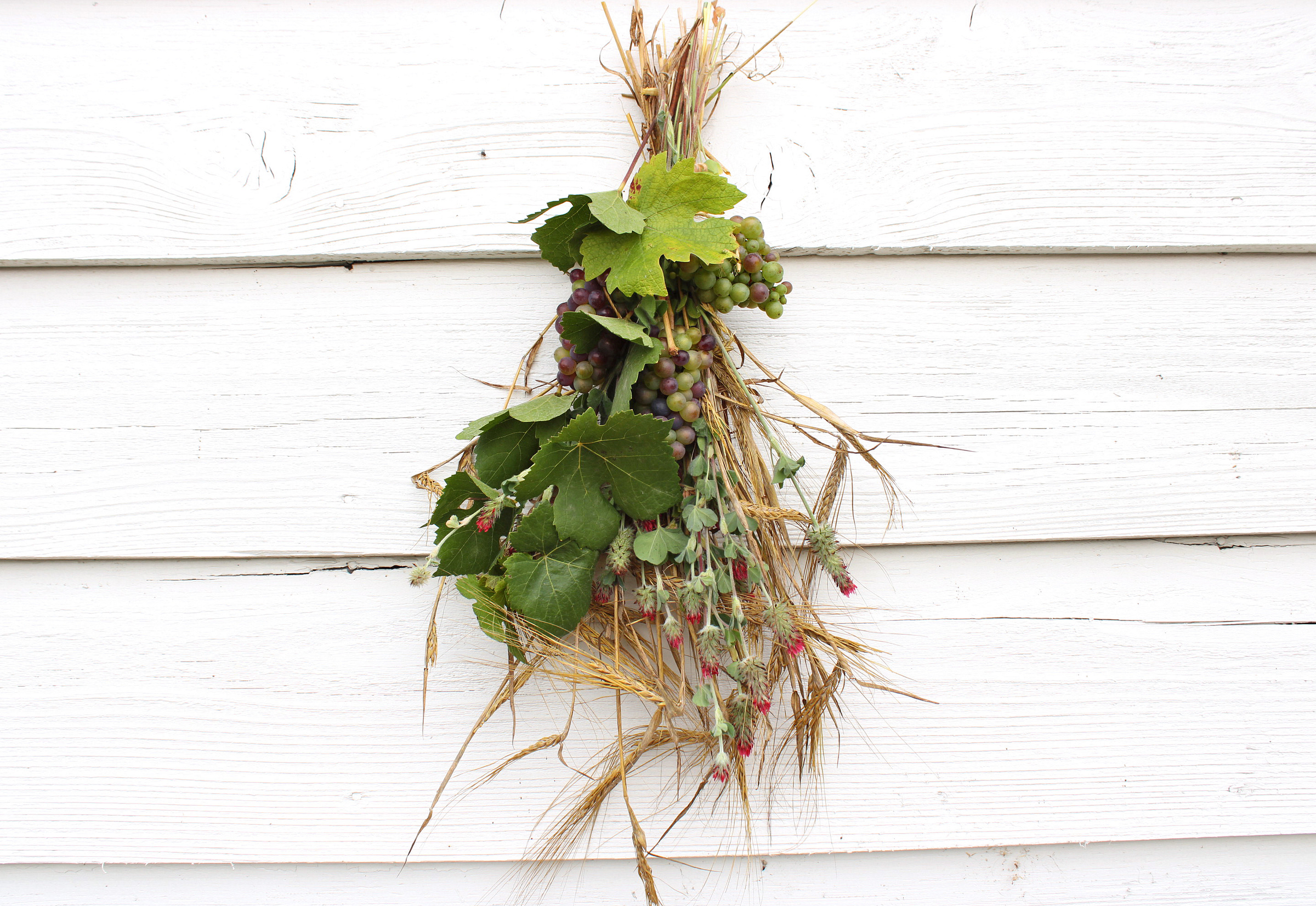
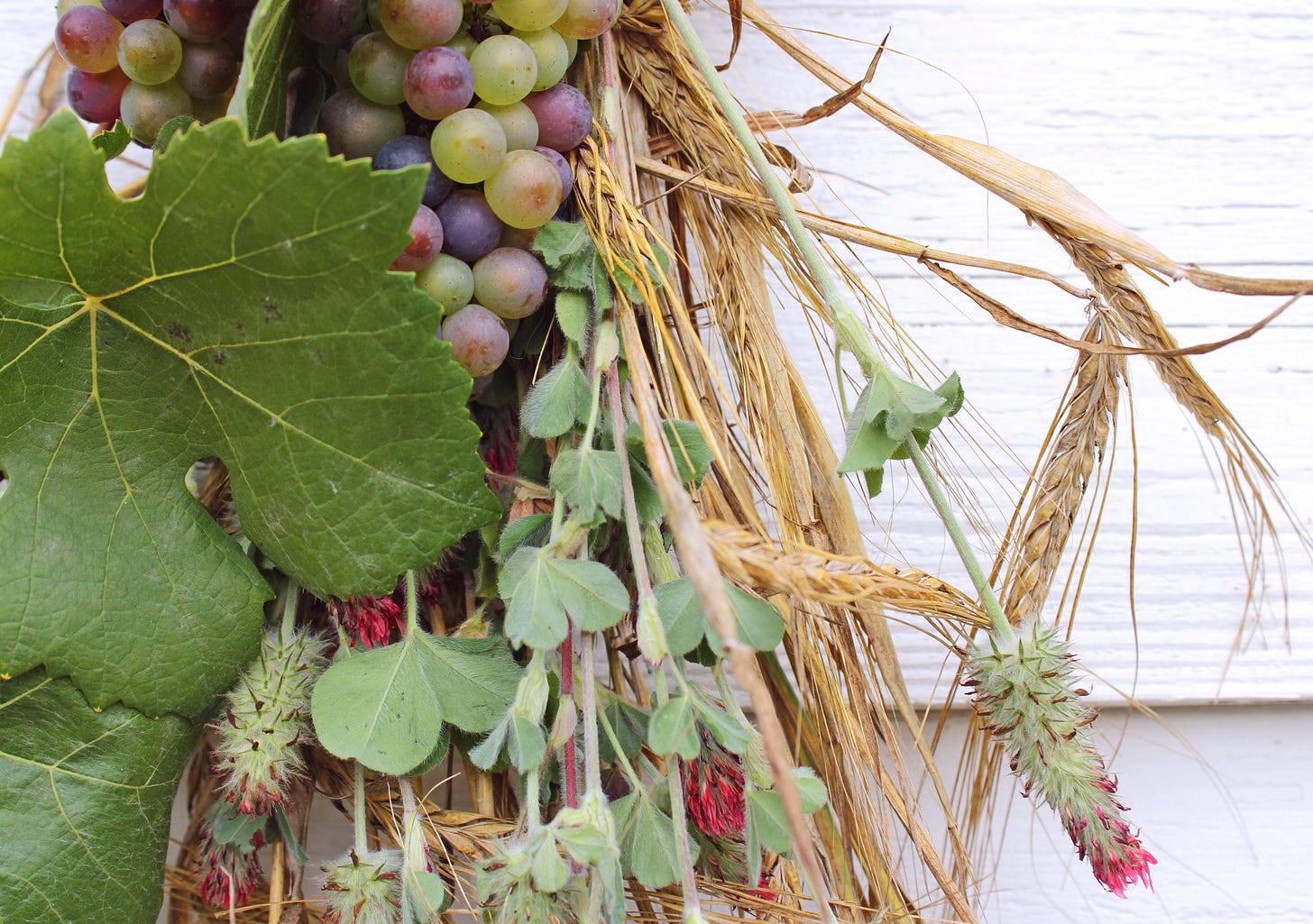
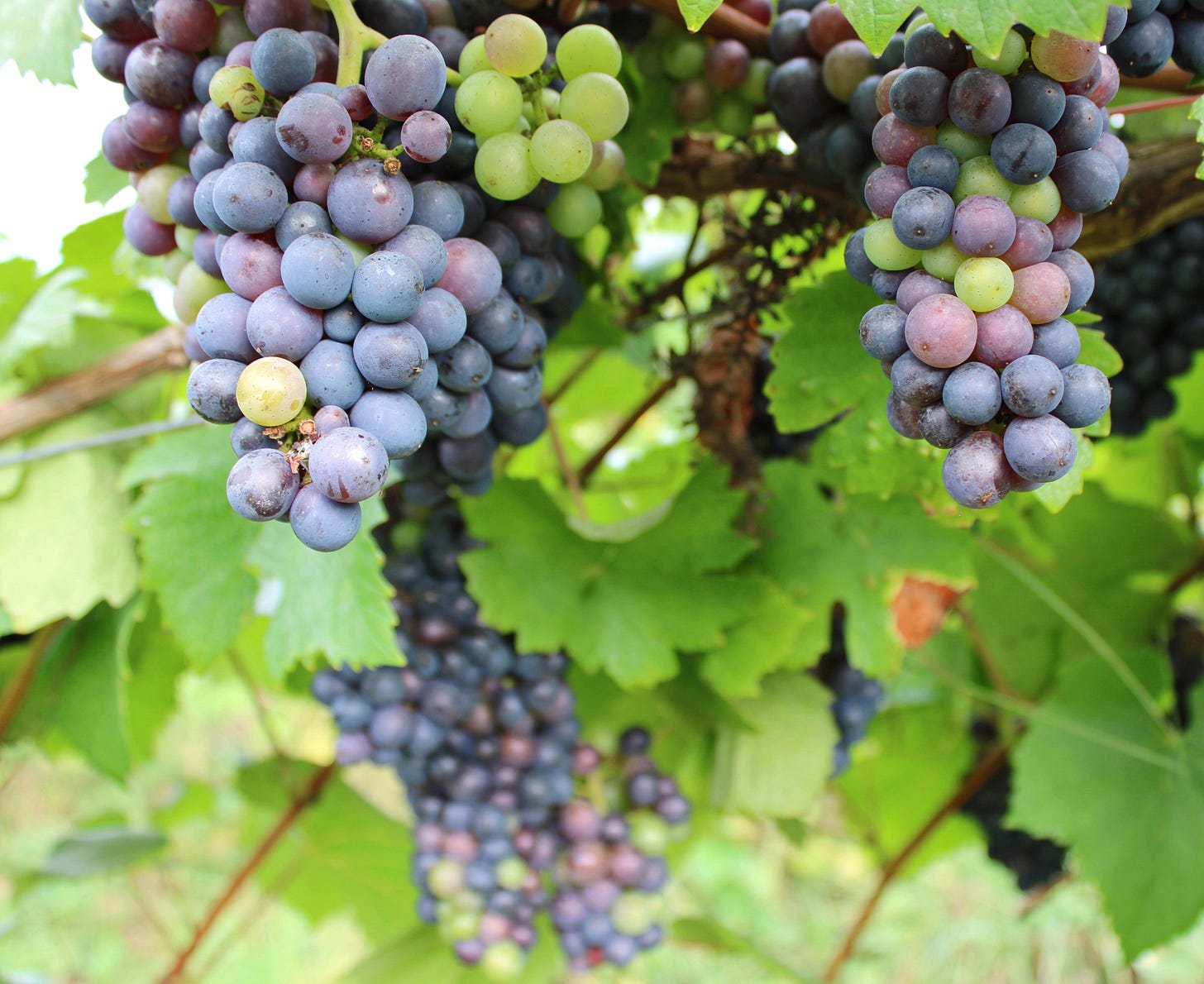
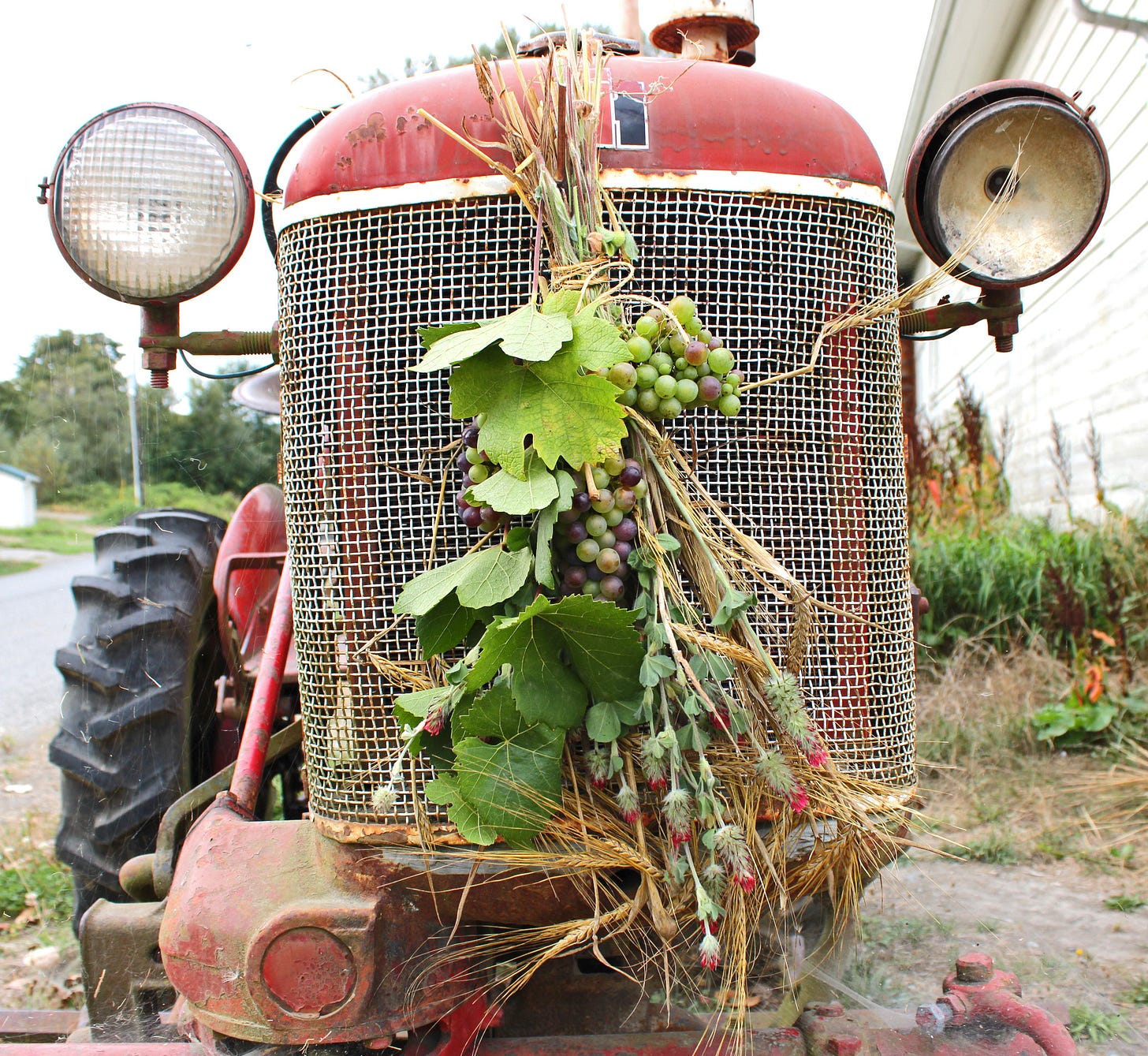
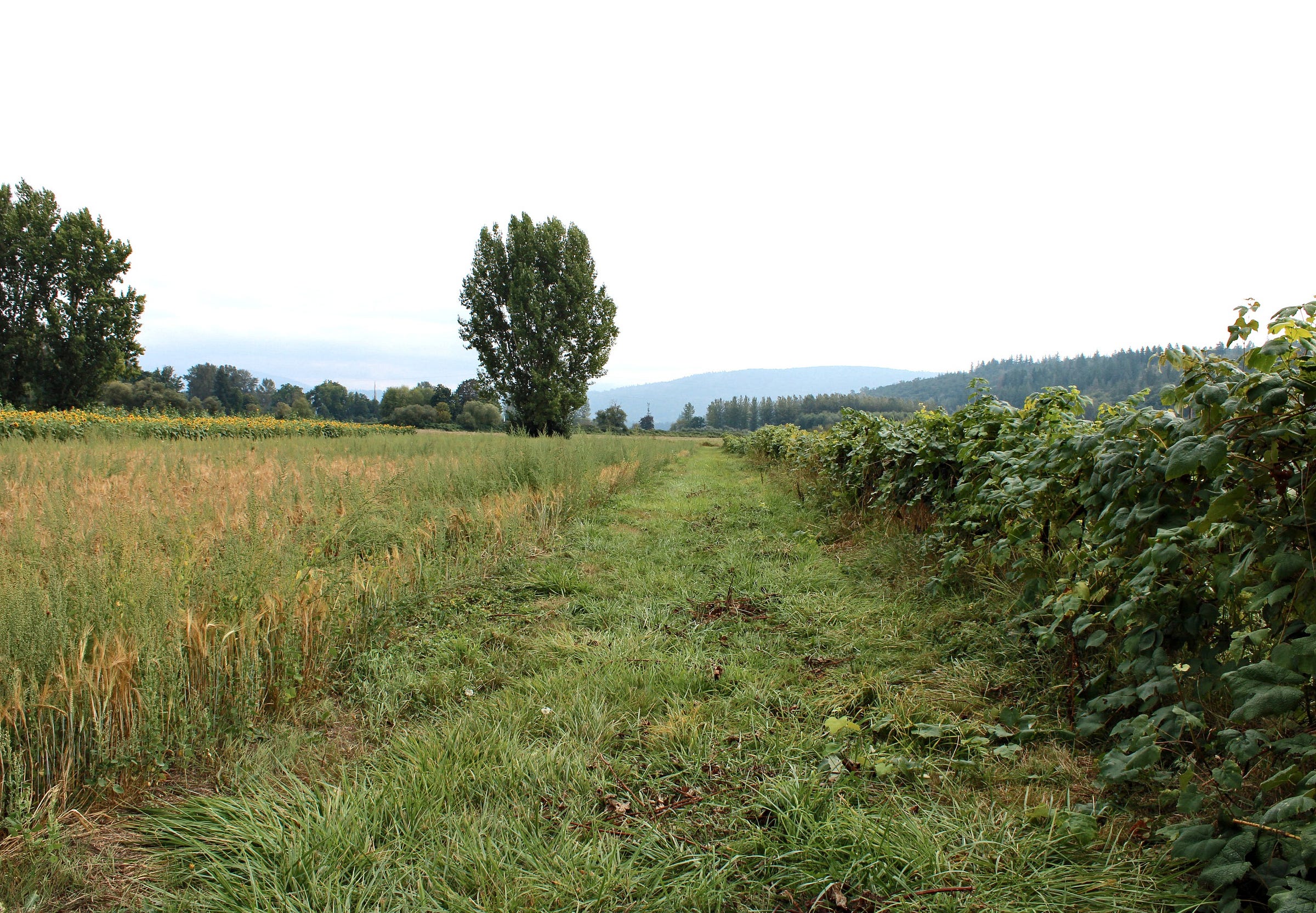
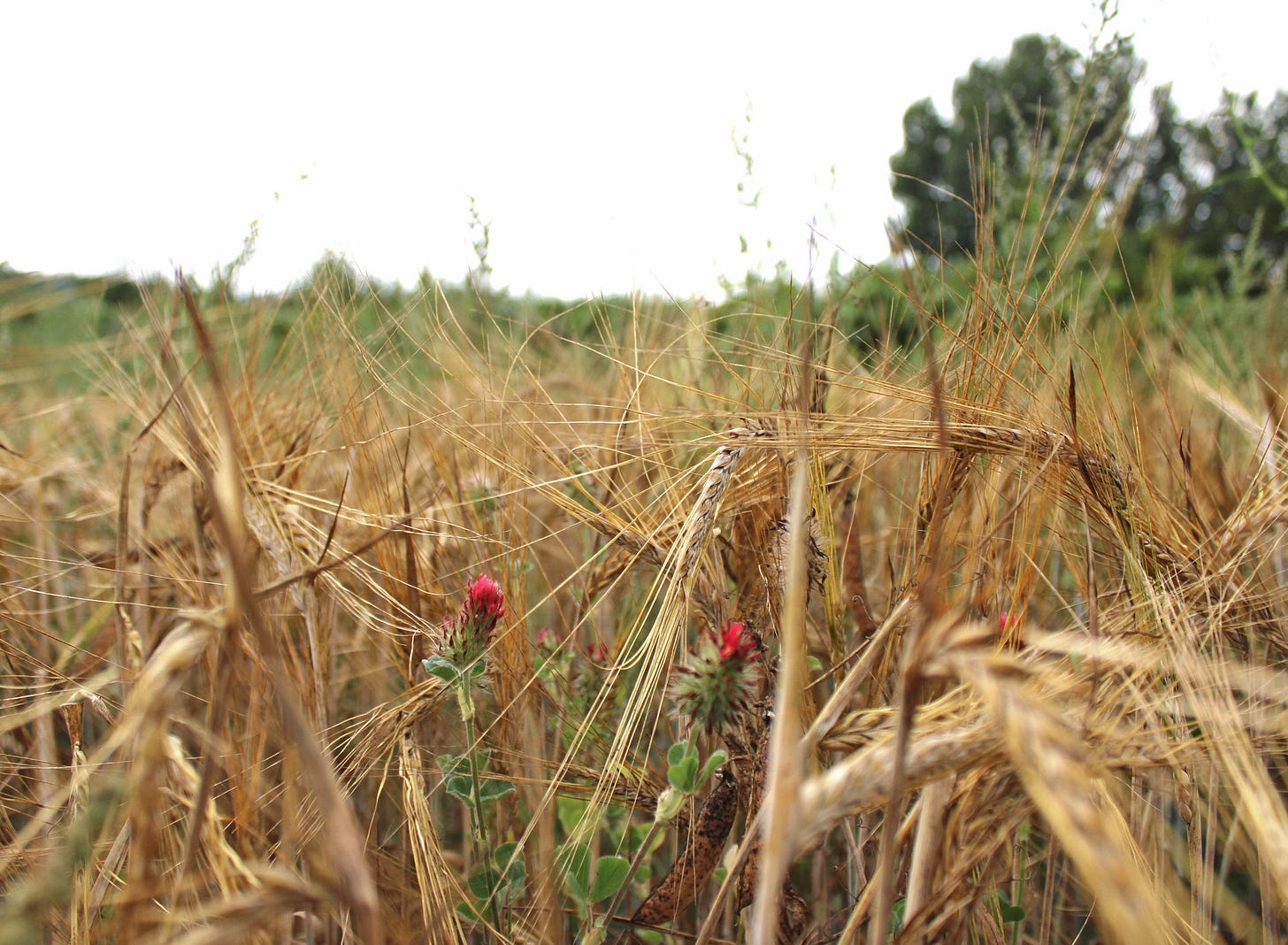




Once your eyes are tuned in to see these great mysteries in nature, they’re found everywhere. The red clover is Mary’s Posies. What’s a posie? I think they’re like a nosegay.
Must’ve have been common place as there is a nursery rhyme named with them in it.
How beautiful!